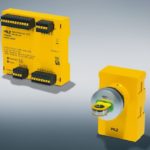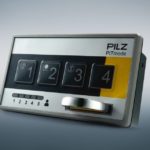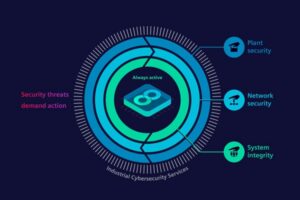Staff who are not trained to use certain plant and machinery should not even have access to danger zones around these machines. Only authorised, trained personnel should be allowed access – and even then only for selected operating modes such as automatic, manual intervention in restricted conditions or service mode. Simple machine operation provides additional support when it comes to avoiding misuse and accidents.
Permission-based access
Various C standards specify that different machine operating modes must also incorporate corresponding safety functions. For example, EN ISO 16090-1 stipulates at least two of these operating modes as mandatory for machining centres and special-purpose machinery, in order to guarantee functional safety. It must be ensured that only one operating mode at a time is selected and active and that the selected mode is clearly displayed. The machine owner decides which staff are authorised to use which operating mode. Safety functions can then be modified, too. For instance, a machine in “setup” mode can be operated at a safe, reduced speed even if a safety gate is open. In addition to functionally safe operating mode selection, it is also important to control access permissions in order to protect plant and machinery from unauthorised access – in other words, to guarantee security at machine level. The system identifies staff who are permitted to access the plant or machine because of their job or qualifications. Depending on the size of the company, it may also be sensible to implement group-based permission management. In this case, the various enables are assigned not to individuals but to whole groups with identical access rights. At the same time, access rights for a machine type in company-wide use, for example, can be stored and assigned centrally. This simplifies the allocation and administration of access permissions, particularly for companies with multiple sites.
No possibility of manipulation
When granting access permissions, it is also necessary to consider the issue of manipulation protection for plant and machinery. An operating mode selection and access permission system such as the modular PITmode fusion offers this dual functionality. PITmode fusion consists of the PITreader unit with RFID technology, an integrated web server and a safe evaluation unit (SEU). Each machine operator has an RFID transponder key with their own individual access permissions. The key is read and taught in the PITreader unit. To increase manipulation protection, the RFID keys can be coded using PITreaders containing company-specific programming, i.e. the keys are given a password-protected, private signature which is encrypted using AES (Advanced Encryption Standard). Any keys that are not coded with this signature will be denied access.
Sensitive data in good hands
Data is transferred securely between the PITreader and the RFID key using the 13.56 MHz RFID technology familiar from contactless payments, amongst other things. Each key is uniquely coded and has a 64-bit security ID. This individual ID lets users assign the RFID key to their operating mode selection and access permission system. The keys can be stored ready for use but not coded until they are actually needed. As soon as the RFID key configuration is complete and no further changes are permitted, the key can be locked for editing. Group-based permission management can also be realised using the RFID keys and PITreader. A group area of 32 groups, each with 0 to 64 permission levels, is pre-installed on each RFID transponder key. In future, it will also be possible to design complex, hierarchical permission matrices in a free user area. PITmode fusion can be used to implement a wide range of functions beyond access permission and operating mode selection. This could be a simple enable, which replaces a key switch on the control console, or possibly access permission for machine subfunctions.
Simple handling – clear control
The aim should be a user-friendly operating concept that keeps user handling and operability simple despite the wide range of functions. This will also help to avoid faults and manipulation. That’s why an operator panel should be clear and intuitive and not contain too many different components. A modular operating mode selection and access permission system such as PITmode fusion can be individually integrated into the design of an existing operator panel due to its modular structure. Existing pushbuttons can likewise be retained, improving usability. A multicoloured LED ring on the PITreader visualises the user information in colour, for example with a “green light” if permission is granted. An intelligent operating mode selection and access permission system enables several mechanical keys to be combined within one transponder key, so that users do not have to manage different keys or access cards.
Sophisticated operating mode selection and access permission management guarantees more efficient production processes in plant and machinery where it is necessary to switch between different control sequences and operating modes. To avoid manipulation and misuse, it should provide clarity and be simple to operate. Modular operating mode selection and access permission systems such as PITmode fusion unite safety and security in one system, ensuring more efficient processes and less downtime.
Online search: cpp0319pilz









